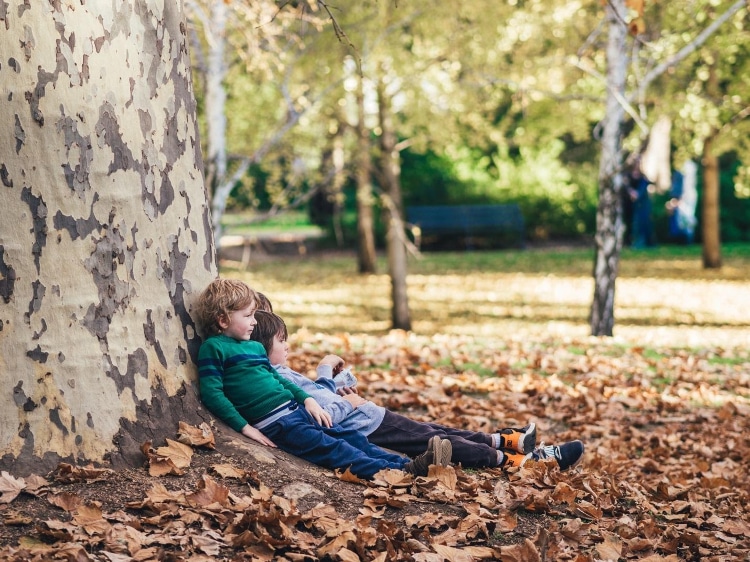Today’s students are growing up in a world that’s spinning (metaphorically) faster and faster. While modern advances have made life easier for college kids in some regards, changes of the twenty first century are also increasing stress, uncertainty, and anxiety for a lot of youth.
As an example, 61% of faculty students in 2016 reported to have sought counseling for anxiety. Even young children report feeling stressed in school, with concerns starting from demanding academic content to fear of failure to pressure in peer relationships.
While there are a lot of considerations value making to ameliorate these concerns, sharing mindfulness with students is a method of equipping youth with empowering tools to raised manage their experience. By teaching mindfulness in schools, students gain recent insight into how they’ll more effectively navigate this ever-changing world.
The Advantages of Mindfulness for Students
Though we frequently think that mindfulness is a practice for adults, it is an ideal practice (and way of being) to introduce to younger generations. Children grow up quickly and are faced with many life challenges from a young age. Mindfulness might help them to raised navigate these challenges.
A few of the observed advantages of mindfulness for college kids include:
- Increased attention and focus
- Improved behavior in schools
- Improved social skills
- Improved self-esteem
- Reduced bullying
- Enhanced emotion regulation
- Reduced stress and anxiety
- Enhanced perspective taking
- Greater compassion
As well as, exploring mindfulness in schools advantages educators as well. A few of the advantages that mindfulness can have on teachers include:
- Improved communication with students
- Enhanced understanding of emotions
- Improved capability to create a positive learning environment
- Increased job satisfaction
- Greater self-compassion
Suggestions for Teaching Mindfulness to Students
When you need to start sharing mindfulness in schools, there are a couple of different suggestions you may want to think about. Sharing mindfulness with students could be done in quite a lot of ways and so the following tips might aid you to determine what makes essentially the most sense for the group you would like to work with.

Start with short mindful pauses.
Mindfulness requires focus and a spotlight, which could be difficult for youth. Begin your exploration of mindfulness in schools by guiding students into short mindful pauses regularly. This can help them to turn into more comfortable with the silence that always comes with mindfulness practice. For instance, you may consider leading a one-minute mindfulness meditation after which inquiring as to how the experience was for them.
Consider the age of those you might be teaching to.
When planning a mindfulness session for college kids, take the age of the scholars into consideration. Teaching mindfulness to 7-year-olds will look otherwise than teaching to a category of teenagers. With younger children, it may be helpful to start out with sensory exploration (similar to a mindfulness in nature practice). With older students, you may first share how mindfulness might help with a number of the common challenges that teenagers face.Enter your text here…
Be patient – and ready for anything.
When teaching mindfulness to youth, be prepared for anything – from verbal resistance to whispering to giggling to frequent bathroom breaks. Be patient within the face of whatever comes up, remaining flexible in your approach. As an example, you may intuitively feel the necessity to explore mindful movement if there may be quite a lot of energy swirling around the category. Be able to shift directions if it’s good to.
Get to know the unique needs of the scholars in the category.
Moreover, it is vital to have a way of what the scholars in the category may be experiencing. When you are from an out of doors organization or are usually not accustomed to the kids in that exact class, ask the teacher before starting if there may be anything try to be made aware of. As an example, if there are health concerns that may make it exceptionally difficult for a selected child to practice mindfulness, it will be best to concentrate on that beforehand.
Think about using music to assist your students tune in.
One other tip value considering is to make use of music during your mindfulness sessions. Nature sounds, as an illustration, are soothing for each adults and youngsters alike. Through the use of mindful music as a backdrop – or, by at the very least starting with it – you may find that student engagement and curiosity increases.
Some nature sounds you may think about using include:
Mindfulness Journal Prompts for Students
One other sort of mindfulness exercise that you just might explore along with your students is mindful journaling. Using mindfulness journal prompts for college kids can enhance self-reflection and spark meaningful conversation within the classroom. Consider offering your class a listing of chosen questions and asking them to journal their reflections on considered one of them. Make sure that you allow space to debate whatever was written while also encouraging students to talk to you individually afterwards in the event that they have to. Not all students will feel comfortable sharing with the category.
Some mindfulness journal prompts for college kids that you just might consider are listed below. Keep in mind that some questions will likely be higher fitted to different youth and for various ages. Select intuitively.

- What are you grateful for today?
- If you feel stressed, what lets you decompress?
- Tune into your five senses. What are you able to sense immediately?
- What does happiness feel like in your physical body?
- What signs let you know that somebody is unhappy/indignant/pleased even in the event that they haven’t said anything about how they’re feeling?
- How do you are feeling when someone listens to you with their full attention?
- What areas of your life might need more care and a spotlight?How do several types of music impact the way in which you are feeling?
- What do pleased friendships feel wish to you?What subjects are you curious to learn more about?
You may as well pair mindful reflection questions with interactive exercises. As an example, in the event you head outside for a nature walk, invite the kids to put in writing about their experience afterwards. What did they notice through the walk? How did they feel?
7 Mindfulness Practices to Share With Students
When you are on the lookout for specific mindfulness exercises to share along with your students, consider the next practices. These scripts, worksheets, and activities could be adapted as suits the group you might be working with. As a reminder, not all practices will likely be the appropriate fit for each group. Share what you suspect will likely be most appropriate and effective on your students.
Three Mindful Breaths – Mindfulness Meditation Script
Enter your text here…As a spot to start out, it is useful to familiarize students with the facility of a couple of easy breaths. Minding the breath is a straightforward technique that students can use any time they should reconnect or to destress – before an exam, while out at recess, or in every other moment. Use this mindfulness script to share mindfulness of respiratory with them.
Mindful of Your Food and Eating – Mindfulness Script
One other great activity for kids is the mindful eating exercise. This script outlines the assorted things you’ll be able to turn into aware of while eating. It encourages a heightened sense of awareness during one easy bite. Make sure that you may have a healthy and secure snack for all children to eat during this practice.
Awareness of Using Social Media – Mindfulness Meditation Script
Social media has a big impact on students’ attention, self-esteem, and other markers of wellbeing. Use this script to assist enhance your students’ awareness of how they use social media.
Gratitude Tree – Mindfulness Activity for Kids
This worksheet outlines an activity you can explore with children to assist enhance their awareness of things to be pleased about. It’s an interactive and playful activity best fitted to younger children (though it may possibly evoke a childlike sense of joy in older children and even adults as well).

Teen Meditation to Consider In Yourself – Mindfulness Meditation Script
When you are working with teenagers on the subject of self-esteem and empowerment, consider this meditation script as inspiration or for guidance. This practice includes positive affirmations and is best fitted to those able to delve into the topics of self-worth, confidence, and self-compassion.
Three Good Things –Mindfulness Worksheet
One other activity to reinforce gratitude is the ‘Three Good Things’ exercise. This could possibly be given as homework or adapted to be used within the classroom. It’s an invite to reflect on three positive events in a single’s day. This exercise just isn’t to overlook difficult experiences that one may need; it simply encourages us to look out for what’s going well.
Short Body Scan – Mindfulness Meditation Script
Lastly, the body scan practice is an exercise steadily explored by many meditators. A practice to reinforce body awareness, this meditation may be explored with an older group – and one which already has an understanding of mindfulness fundamentals.
References:
- 1https://www.apa.org/monitor/2017/09/numbers
- 2https://files.eric.ed.gov/fulltext/ED536513.pdf09/numbers
- 3https://www.mindfulschools.org/about-mindfulness/research-on-mindfulness/
- 4https://greatergood.berkeley.edu/article/item/seven_ways_mindfulness_can_help_teachers






